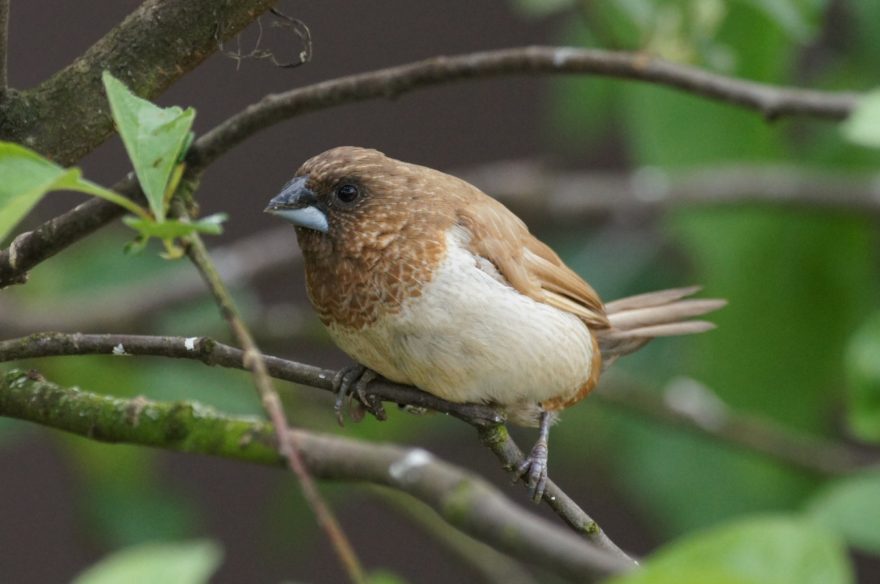The Bengalese finch—known as the society finch in North America—is a domesticated finch that is not found in the wild. It’s most closely related to the white-rumped munia, and is believed to be an interspecific hybrid of the white-rumped munia and several other birds from the Lonchura family. Bengalese finches are popular in aviculture thanks to their low care requirements and propensity to be excellent foster parents.

Housing & Compatibility
Bengalese finches can be successfully housed in cages or aviaries. They can be housed as single pairs or in a colony, and will happily share an aviary with other placid finches, doves, and quail. A colony will construct a communal nest used for roosting and breeding.
Bengalese finches can hybridize with a wide variety of different species, so avoid keeping individual unpaired birds with other species. Hybridization is not limited to the closely-related Lonchura family (predominantly found in Asia), as hybrids with Australian species—especially the zebra finch and double-barred finch—have been reported.
Diet & Feeding
A quality seed mix including canary seed, various millets and panicum forms the basis of the bengalese finch’s diet. Seed lacks many essential vitamins and minerals which must be compensated for by introducing other foods. Sprouted seed increases the nutritional value of seed and is a cheap way to improve your birds health. Freshly grown green seed heads should also be offered frequently.
Leafy greens such as kale, bok choy, endive and silverbeet should be provided frequently. Bengalese finches also enjoy fruits and vegetables, such as apple and broccoli.
Live food is not essential to breed Bengalese finches, however many pairs will consume a small amount and it’s an excellent source of protein. If you intend to use Bengalese finches to foster rarer species with an appetite for insects, a Bengalese pair that’s accustomed to eating live food is essential.
Commercial finch soft food mixes can also be provided for an added nutrient boost, particularly when breeding.
Do not feed anything from the list of forbidden foods.
Breeding
Bengalese finches will breed throughout the year, once they reach sexual maturity at about six months of age.
A wide variety of artificial nests will be accepted, including wicker baskets, wood budgie-style breeding boxes, and canary cups. Some may prefer to construct a natural nest in a shrub or dry brush. The cock bird will construct the nest using fine strands of grass.
They typically lay 4-7 eggs in each clutch, which are incubated by both parents for approximately 14 days. Young birds fledge the nest at three weeks of age and are usually independent a month later. Multiple pairs may share the same nest and divide incubation and chick feeding duties.
Nest inspections are generally tolerated, but should be avoided unless completely necessary.
Young birds can be left in the aviary once they reach independence.
Sexing
Bengalese finches cannot be accurately visually sexed. The most effective strategy to determine a bird’s gender is to watch for behavioral clues. Only males will sing or display a courtship dance, which involves fluffed up feathers and a lot of hopping.
Health
A strict worming and parasite control regime is essential to ensure the long-term health of any finch collection. Bengalese finches can be expected to live for 4-5 years.
Discovered the accidental way that they will cross with Javas. Though the cock Java was at fault. The resulting offspring is now 7 yrs old.